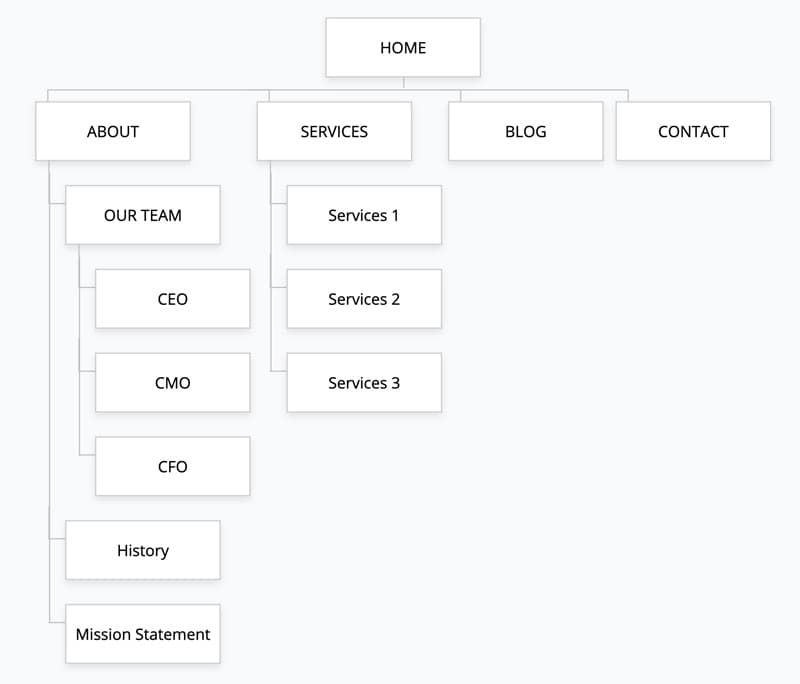7 Ways You Can Help Your Web Designer

Yes, You Can Help Ensure a Great New Website Design
Making the decision to finally opt for a new web design is considered half the battle. Now that you have made the decision you are done right? It is now out of your hands right? Wrong on both counts. There is much you can do to help your web designer and ensure the success of your new website. Consider the seven points below when working toward improving your internet design.
1) Define Your Website Goals
It is easy to simply say you want or need a new website design. But what are the goals for the new site? Much like Search Engine Optimization (SEO), it pays dividends to define objectives for the project. A “build it and they will come” mindset is not the most effective or successful approach.
Common Web Design Goals
Depending on your organization and needs, your objectives may include one or more of the following:
- 1.) Capture more leads
- Whether this includes more newsletter subscriptions, form contact submissions, phone calls or physical visits to your brick and mortar
- 2.) Restructure your site architecture
- Perhaps your website has been suffering from a poor bounce rate. If so, a restructure and reorganization of the information on your website might be in order
- 3.) Lead conversion
- You are getting visits but need more conversions for online sales, donations, volunteers or subscribers
- 4.) Become more of an authoritative resource
- Include information on your website that clearly distinguishes your organization as an authoritative resource for your given niche or business model
- 5.) Provide better information about your products or services
- Companies grow all the time and information about your business changes as well. It may be time to update your website to include new products and or services which can help with your search engine rankings
2) Be an Integral Part of the Process
Throughout the web design process, your input is extremely valuable. No one knows your business or organization better than you do, so adding yourself or whomever you delegate that responsibility to, during the development is crucial to a successful outcome.
Defining your goals, as stated above, is important. Just as important are the site mapping and wire framing phases. When the design is in its infancy, deciding what content goes where on the new home page, for example, is pinnacle. Your insight is invaluable when considering the layout of the website which includes the site goals as well as what information will be where in the new layout. This can help reduce bounce rate, increase leads and conversions, etc.
Help Create a Site Map for the New Website
A sitemap, in its simplest form, is a list of the pages you expect to create for your website. It can be a bulleted list created in an email, Microsoft Word or any other form, even a cocktail napkin!
A sample sitemap might look like this in a list format:
- Home
- About
- Our Team
- Individual Team Member 1
- Individual Team Member 2
- Individual Team Member 3
- History
- Our Team
- Services Overview
- Individual Service 1
- Individual Service 2
- Individual Service 3
- Products Overview
- Individual Product 1
- Individual Product 2
- Individual Product 3
- Blog
- Privacy Policy
- Usage Terms
- Contact Us
A free resource is available to create sitemaps like the one below at Gloomaps.com. Click the image to enlarge.
3) Provide Quality Imagery or Photos You May Have
People are, for the most part, very visual. Reading a page full of text is not always ideal. Images for your new website will not only add a visual dynamic but also help to convey meaning or support adjoining copy on the web pages.
That being said, if you are able to provide photos and images it is imperative that they be of the highest quality available. A common error that occurs is providing low quality images that when placed on the website look pixelated because it is placed at a larger size than the original. This does not help the visual quality of the page and consequently, your brand.
This is especially true if you are looking at an ecommerce web design. Because we are all consumers at some level, you might want to ask yourself if you would purchase anything online if the imagery depicting the product or service was of a poor quality?
Web Page Image Quality Example

Stock Photography As An Option
Another option is stock photography. Most web designers will have access or a subscription to a stock photography resource. This can help greatly when the images you have are of a poor quality or you do not have images at all. The costs are usually minimal and may include a slight upcharge (cost plus a percentage) but again, this is not usually cost prohibitive.
Free Stock Photography Resources
If your web design project has a very slim budget and you need stock photography there are a number of resources available that provide free images. These are two of the most popular:
4) Furnish Copy/Text for Your Web Pages
Your website should clearly explain your products and/or services offerings and convey any brand message established. As stated above, no one knows your business more than you. With this in mind it is important you are able to provide the content or copy (text) for your website. This is something that is often overlooked or not approached with enough diligence when considering a new website design.
If you are not providing the copy and are opting for copy writing services, appointing yourself or someone else to review the copy that is written is just as important. An interview or multiple interviews may be needed in order to gather the information and insight that will help deliver the copy that is best suited to inform and educate your website visitors.
5) Supply a High Quality Logo File
Your logo design should be considered as one of the most important investments in your business. The logo will usually outlive any material asset your business or organization may purchase throughout its life. After all it is the visual representation of your business therefore it should be treated as such.
(Read more about how “Your Logo Design Does Not Define Your Brand, You Do”.)
Any logo designer worth their salt will provide your final brand mark in multiple sizes, colors and formats. It is always best to provide your web designer with the vector version of the logo. This will most often be a .ai (Adobe Illustrator) file. This format will allow your web designer to resize the logo as needed without fear of image or quality degradation.
Providing your logo in .jpg format may not always work. If the logo is to be placed on a colored background, for example, the logo will need to be brought into an image editing application such as PhotoShop, and the white or other colored background removed. This does not provide optimum results.
If you do not have the original .ai or .svg file available, a large, transparent .png format will often suffice. This file should be as large as possible in the event it needs to be resized for placement.
6) Provide Access to Hosting and Domain Name
Once the new website has been designed and approved, it is time to move it to a live environment. In order for the website to be viewed by the world it must be uploaded to the hosting server. To complete this final step of the web design process, FTP and/or Cpanel access is necessary, if you have your own hosting account. This information will have been provided to you by your hosting company when you set up the account.
If you do not have a hosting account, we can help set one up for you. This should be determined in the Discovery Phase of the project. If this is the case your web designer will need access to your Domain Registrar account in order to repoint the domain name to the new hosting setup.
7) Be Available for Ongoing Communications
Along with all the responsibilities and tasks that may be assigned to a client when deigning a new website, the most important requirement is communication. Being available from start to finish is vital to the success of your project. This means providing expedient responses to requests for information or content, being available when questions arise, providing quick feedback during the proofing stages, etc.
Depending on the size of your website, a new design can be completed in a matter of weeks instead of months. But this is only possible when you are able to communicate effectively and quickly with your webs designer on a regular and consistent basis.
Business happens and it is understandable when you may not have the time to address certain issues or provide timely feedback. You have a business to run. If and when this happens it is important that expectations remain realistic. If your focus is required elsewhere in your business for any length of time, this should be considered if and when a milestone or deadline approaches and may not be met due to an unforeseen lack of availability.
When you are able to assist your local web designer in the developing your new website, the process can go so much more smoothly and efficiently. With this in mind, your web designer should be considered your partner and not a vendor. Working together to achieve a goal creates a team culture and is more successful than not.
Have questions? Contact us today!
